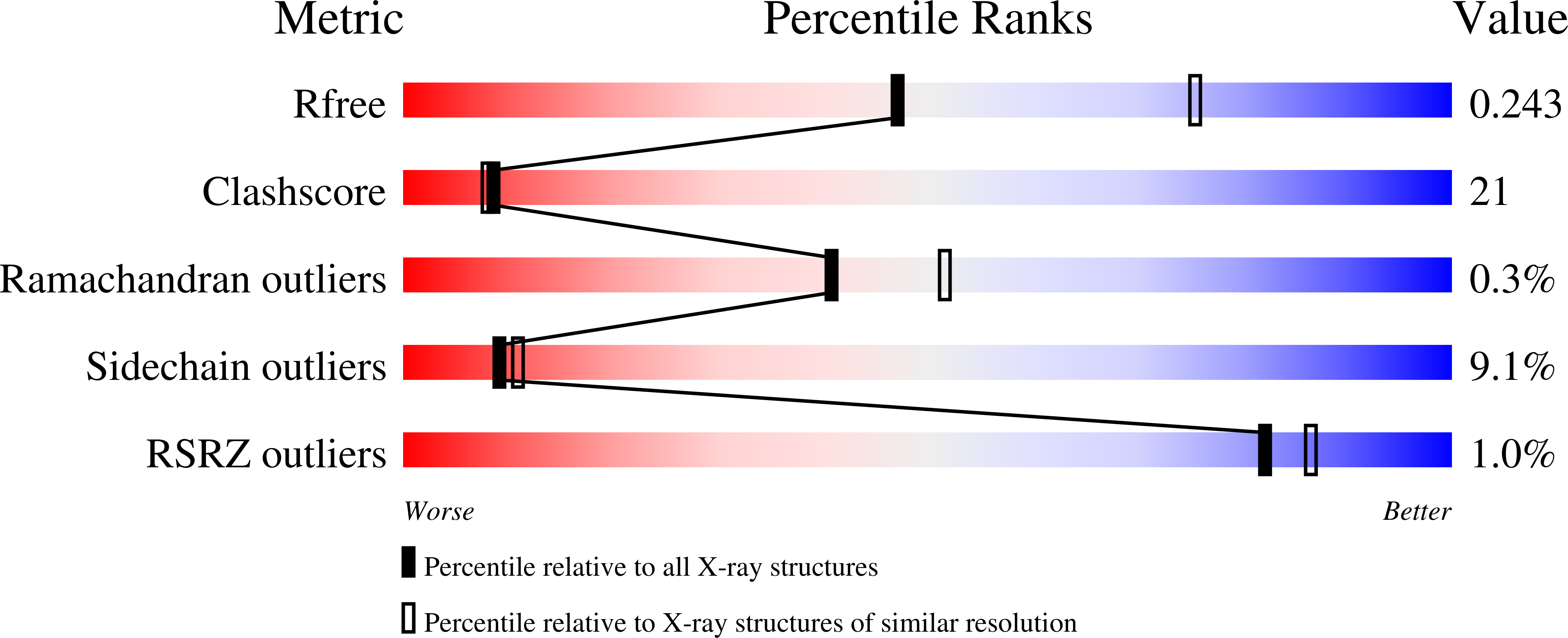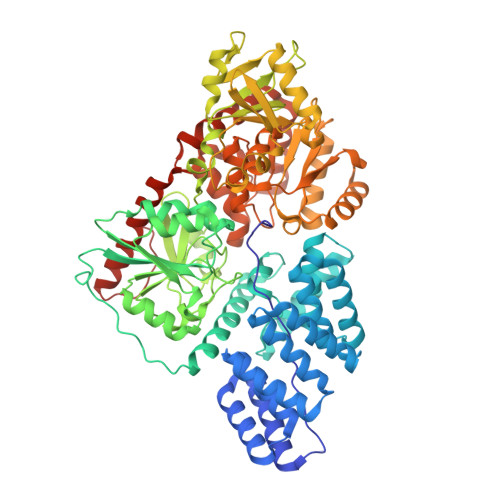Recognition of a glycosylation substrate by the O-GlcNAc transferase TPR repeats.
Rafie, K., Raimi, O., Ferenbach, A.T., Borodkin, V.S., Kapuria, V., van Aalten, D.M.F.(2017) Open Biol 7
- PubMed: 28659383
- DOI: https://doi.org/10.1098/rsob.170078
- Primary Citation of Related Structures:
5LVV, 5LWV - PubMed Abstract:
O-linked N -acetylglucosamine (O-GlcNAc) is an essential and dynamic post-translational modification found on hundreds of nucleocytoplasmic proteins in metazoa. Although a single enzyme, O-GlcNAc transferase (OGT), generates the entire cytosolic O-GlcNAc proteome, it is not understood how it recognizes its protein substrates, targeting only a fraction of serines/threonines in the metazoan proteome for glycosylation. We describe a trapped complex of human OGT with the C-terminal domain of TAB1, a key innate immunity-signalling O-GlcNAc protein, revealing extensive interactions with the tetratricopeptide repeats of OGT. Confirmed by mutagenesis, this interaction suggests that glycosylation substrate specificity is achieved by recognition of a degenerate sequon in the active site combined with an extended conformation C-terminal of the O-GlcNAc target site.
Organizational Affiliation:
Centre for Gene Regulation and Expression, School of Life Sciences, University of Dundee, Dundee, UK.




















